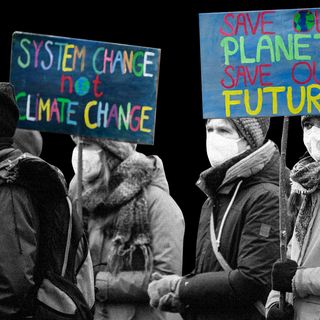
In Meghalaya, the Umngot River Keeps Tribal Livelihoods Afloat. A Dam Project Threatens That Balance
Activists say any gains in electricity from the dam will come at the cost of indigenous livelihoods, health, and rights.

The Umngot River is touted as India’s cleanest river, with the bottom of its rich, blue-green expanse sparkling in naked display. But the Umngot Hydroelectric Project, conceived by the Meghalaya Energy Corporation Limited (MeECL), is set to change that forever.
The project aims to address Meghalaya’s acute shortage of power, but if the dam’s 210 MW of energy does so, hundreds of lives, forests, and livelihoods in the riverside villages will be destroyed.
Mired in financial issues, with unrecovered dues worth Rs 600 crore, the MeECL has chosen to write off people’s concerns. Its attempts to bulldoze through new project approvals were forestalled on April 8 and April 9 by indigenous groups obstructing the public hearings at Siangkhnai in East Khasi Hills and Moosakhia in West Jaintia Hills respectively.
For Merrysha Nongrum, an activist from Umsawwar village who dabbles in farming, the April 8 protest still rings in her memory. Showing up as a leader, she amassed residents of six upstream villages — Umsawwar, Pashang, Mawsir, Mawdulop, Ksanrngi, and Mynsang — at Mynsang village. This culminated into a road blockade impeding officers driving to Siangkhnai village, 20 kms away, for the public hearing by the Meghalaya State Pollution Control Board (MSPCB) on the project.
Amid increasing fears of imminent land submergence and acquisition, Merrysha stood in solidarity with villagers, demanding to scrap the mega-dam project, starting from 5 a.m. In what felt like a deliberate betrayal, she said, “they excluded us from the public hearing. Hence, we chose to stall their way.”
Three weeks before, Merrysha had submitted a letter to the MSPCB to stop the public hearing, citing violations of the Sixth Schedule, a constitutional provision safeguarding the rights of the tribal people through Autonomous District Councils (ADCs). Merrysha didn’t hold her tongue in calling out the perfidy of the state government in not bothering to engage a wider public in its public hearings. “The EIA was made available online on such a short notice. They didn’t even print the EIA in local language,” she fumed.
The Environmental Impact Assessment, or EIA, is a study that is supposed to lay bare the impact of a proposed project on the environment. But even today, companies — proponents of the project — pay a hefty bribe to experts working the EIA, who end up protecting bad projects instead of the environment, said Navin Juyal, Ph.D., a geologist formerly with the Physical Research Laboratory in Ahmedabad.
The submergence of indigenous future
Originating in the eastern part of the Shillong Peak, in the East Khasi Hills of Meghalaya, the Umngot River flows south, forming a natural boundary between East Khasi Hills District and Jaintia Hills District.
In the village of Shnongpdeng, the Umngot River curves into the wall of cliffs hemming it; its crystal clear waters lend themselves to camping and aquatic sports to the extent that tourism has become a mainstay of its residents like Dap Syngkrem. In peak season, Syngkrem engages around 500 tourists a day in recreational water activities such as snorkeling, scuba diving, boating, and kayaking. He chalks up his earnings, Rs 3000-Rs 5000 a day, to the river alone. Another tour operator based in Syngkrem’s village, Lur Talang, recounts registering up to 100 tourists from across the world in a single day for riverside camping. Returns on tourism — which can yield up to Rs 10,000 a day — are managed by the village-based Shnongpdeng Tourism Development Society.
However, the dam proposal heralds the end of all this. “With the dam underway, the village will be shorn of its steady stream of tourists,” Syngkrem said.
“The USP of such tourist spots is the crystal clear water. Do you think there will be no turbidity in the river once the dam is built upstream?” added H.H. Mohrmen, an environmentalist from Meghalaya.
Related on The Swaddle:
Thousands of Large, Old Dams in India Pose Threat to Downstream Populations: UN Report
The 82-km stretch of the Umngot River irrigates more than 800 sq km of land as it branches out into smaller streams. Along the river bank, Pynskhem Mukhim, a 27-year-old farmer from Mawdulop, grows rice, fruits, ginger, and broom grass, a plant that is eventually bundled into brooms. But if the dam is accorded approval, he will lose his land and the livelihood that feeds his family of four, including two daughters.
An EIA report on the Umngot dam, released online on Jan 27, 2021, states the project will acquire 390.50 ha of land. A cumulative area of 253.75 ha will be submerged, land where farmers extensively grow broom grass. Mukhim draws an annual income of Rs 1,90,000 by selling 19 quintals of broom grass alone. Also, he sees dams as monuments that upend long-standing indigenous cultures. “The dam will disrupt the traditional modes of land inheritance, passed down from generations,” he said.
Like Mukhim, most of the farmers in Meghalaya employ the traditional shifting agriculture technique for growing crops. The EIA report tears down this method of cultivation for being environmentally detrimental. As an alternative, it seeks to replace shifting cultivation in 788 ha of land straddling the river’s catchment area with mixed cropping.
Rajkamal Goswami, a conservation scientist at the Ashoka Trust for Research in Ecology and Environment (ATREE), in Bangalore, calls out the move for endangering biodiversity. “In shifting cultivation, the area left fallow grows back to forest in a year, allowing for broader biodiversity,” he said.
The dam, by and large, would deprive 378 families of their ancestral land. The compensation of Rs 5 lakh per affected family doesn’t even begin to square with the present market rate of the land, which is much higher. According to Mohrmen, it’s unfathomable to even consider buying new land with such poor compensation. More importantly, lands of indigenous people are priceless heirlooms with a sense of belonging that is visceral.
“You cannot put a price tag on our ancestral ties to the land,” Merrysha said.
The narrow definition of “development” in projects such as the dam often forsakes the lives they most impact. As many as 245 Bhakra dam oustees were yet to be rehabilitated by the Himachal Pradesh State government in 2019, five decades after Asia’s second-tallest dam was completed in 1963.
“Whenever a hydropower project is executed, there are social inequalities. People living in the command area are well-off, whereas people whose land had submerged become poorer,” geologist Juyal said.
Another concern for Mukhim is the loss of exotic medicinal plants conserved in community-owned forests due to the dam construction. In Meghalaya, as in many indigenous communities, traditional medicines play a vital role in health care — being used to treat fever, stomach disorders, headache, cough, and cold. A study on forest management practices of the tribal people in Meghalaya revealed 70% of medicinal plants used for traditional medicines came from village-restricted forests and village forests, 10% from agroforests, and 20% from home gardens.
In Mukhim’s village, Mawdulop, women venture into forests to ferret out medicinal plants, making Rs 400-Rs 1200 per day from distribution and collection alone. “The land is so fertile in these forests that these plants grow on their own. People from across the state still rely on herbal medicine extracted from such plants,” Mukhim explained. The dam project will thus also leave a sizable dent on the indigenous health care system as well as economy.
The ecological and human cost
Long before the downstream villages of Dawki and Shnongpeng sprang up as tourism hotspots, fishing was the chief source of income for villagers. For Syngkrem, the water sports operator from Shnongpdeng, fishing remains a subsidiary activity, especially in the lean period of April to September, when guests are comparatively fewer — say, only 200 a day. In his telling, a kilogram of fish freshly caught from the Umngot River, sold at Rs 300-Rs 400, brings in a monthly income of Rs 10,000-Rs 12,000. As for the entire village, bustling with a population of 700-800, not every individual is vested in courting tourists.
“My parents and generations alike still carry forward the tradition of fishing from our forebears,” Syngkrem said.
Once the dam is built upstream, the river downstream will be rendered dry, slowly draining into a watery graveward for fishes. A report by the South Asia Network on Dams, Rivers and People (SANDPR) states the diversion of water through dams has collapsed downstream ecosystems and fisheries in the Krishna, Godavari, Mahanadi, Pennar, Narmada, Tapi, Sabarmati, Mahi, and Cauvery rivers.
Related on The Swaddle:
Uttarakhand Floods Worsened by Rampant Development in Eco‑Sensitive Areas, Environmentalists Say
The EIA summary for the Umngot project fails to mention the river’s biodiversity.
“Unless you specify the aquatic biodiversity under the water, you cannot calibrate the environmental flow needed to sustain freshwater ecosystems,” Juyal noted. The term “environmental flow” refers to the amount of water running in a freshwater body that maintains aquatic ecosystems and human livelihoods dependent on them.
More ominously, the EIA report downplays geological and seismic risks. Given that northeast India falls in Zone 5 – the most earthquake-prone zone — the quest for a dam is riddled with frightening risks. What concerns Juyal, the geologist, is the casual approach towards reservoir-induced seismicity (RIS) in the EIA. RIS is the earthquake triggered either immediately after filling the reservoir, or after a delay of a few years. Mulling the EIA report on the Umngot dam, he pointed out, “at the least, they could have specified whether there was any fault below the dam that might trigger RIS.”
Even the compensatory efforts that are outlined in the EIA leave experts skeptical. Environmentalist Goswami is cautious about the compensatory afforestation practices envisioned in the EIA to offset the government’s deforestation during the project. First, afforestation never sees the light of the day when such projects are undertaken, he said. The EIA clear-cut mentions there are no sanctuaries, national parks, or biosphere reserves in the project area. Exposing such watered-down environmental safeguards, Goswami warned: “The absence of protected areas within the project area is not true. With red tape pending, the Mosakhia sacred grove–home to rare and endangered fauna like the Asiatic Black bear–is a proposed protected area.”
Not even a week after the protests unfolded, Meghalaya Power Minister James Sangma skirted indigenous people’s concerns over the dam changing the river, the land, and their livelihoods. This angers farmers like Mukhim who cannot protest due to pandemic restrictions. If anything, the river belongs to him and the people who live along it, people who are subject to its rhythms, and its ebbs and flows. To build a dam means snapping that relationship for good.
“Umngot is a small river,” Goswami said. “When you dam a river, you are killing the river downstream. Once dead, the river cannot be recovered.”
Aatreyee Dhar is an independent reporter who is passionate about underreported health and environmental issues from Northeast India.
Related


How a Tiny Indian Owlet Was Discovered, Vanished for 100 Years, And Was Discovered Again
